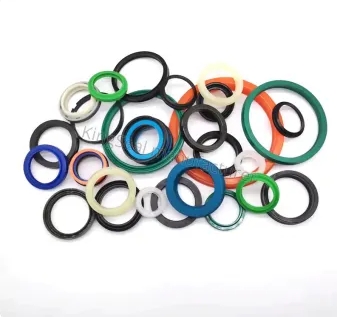How Many Types of Hydraulic Seals Are There?
Introduction:
Hydraulic systems are widely used in various industries, including automotive, manufacturing, and construction, to transmit power through the controlled use of pressurized fluid. Hydraulic seals are essential components of these systems, ensuring efficient and reliable operation by preventing fluid leakage and maintaining system integrity. In this article, we will explore the different types of hydraulic seals commonly used and their respective applications.
Piston Seals:
Piston seals are designed to fit tightly around the piston rod in a hydraulic cylinder. They are typically used in dynamic applications where the seal is in constant motion. Piston seals are crucial for maintaining fluid pressure on the piston side and preventing leakage between the piston and cylinder bore. They come in various designs, including single-acting seals, double-acting seals, and composite seals, and are often made of materials like polyurethane or rubber with additional fabric or metal reinforcement.
Rod Seals:
Rod seals, also known as shaft seals or oil seals, are installed on the outer surface of the piston rod and prevent leakage from the hydraulic cylinder to the external environment. They are vital in keeping contaminants out of the system and ensuring smooth operation. Rod seals can be single-acting, allowing fluid to flow in one direction, or double-acting, providing sealing in both directions. Common materials used for rod seals include nitrile rubber, polyurethane, and fluorocarbon.
Wiper Seals:
Wiper seals, also called scraper seals or dust seals, are installed in hydraulic cylinders to prevent dirt, dust, and other contaminants from entering the system. They are typically installed in a groove near the rod seal and wipe away debris during the rod's extension and retraction movements. Wiper seals are often made of materials like polyurethane or rubber and come in various configurations, including single lip, double lip, or triple lip designs.
Wear Rings or Guide Rings:
Wear rings, also known as guide rings or guide strips, are used in hydraulic cylinders to guide the piston and rod, reducing friction and preventing metal-to-metal contact. They are typically made of materials like bronze, nylon, or polyurethane and are placed between the piston and the cylinder bore or around the piston rod. Wear rings contribute to the longevity and efficiency of hydraulic systems by minimizing wear and improving sealing performance.
O-Rings:
O-rings are versatile and widely used hydraulic seals that provide effective sealing in various applications. They are simple circular rings typically made of rubber or elastomer materials, molded in the shape of a torus. O-rings are compressed between two mating surfaces to create a seal and prevent fluid leakage. They are known for their resilience, high-pressure resistance, and compatibility with a wide range of fluids and temperatures.
Backup Rings:
Backup rings, also called anti-extrusion rings or support rings, are used in conjunction with other hydraulic seals to provide additional support and prevent extrusion or squeeze-out of the sealing element. They are typically installed on one or both sides of the primary seal and provide resistance to high pressure, preventing damage to the seal. Backup rings are commonly made of materials like polytetrafluoroethylene (PTFE) or polyurethane.
Vee Packing:
Vee packing, also known as chevron packing or stack seals, is a set of multiple sealing rings stacked together to create a reliable and effective sealing system. Vee packing sets usually consist of multiple V-shaped rings made of elastomeric materials like rubber or thermoplastic polyurethane. They are commonly used in high-pressure hydraulic applications, such as hydraulic presses, cylinders, or swivels, where effective sealing is critical.
Cassette Seals:
Cassette seals, also called modular seals or split seals, are designed for easy installation and replacement in hydraulic systems. They consist of multiple components, including the primary sealing element, support rings, and housing, all integrated into a single cassette-like unit. Cassette seals are commonly used in heavy-duty applications or in situations where the seal needs to be replaced frequently without disassembling the entire hydraulic system.
Conclusion:
Hydraulic seals play a crucial role in maintaining the integrity and efficiency of hydraulic systems. The various types of hydraulic seals, including piston seals, rod seals, wiper seals, wear rings, O-rings, backup rings, vee packing, and cassette seals, offer specific sealing capabilities for different applications. Choosing the appropriate hydraulic seal based on factors like system requirements, pressure levels, temperature, and fluid compatibility is essential for optimal performance and longevity of hydraulic systems. With the right selection and proper maintenance, hydraulic seals contribute to reliable and leak-free operation in a wide range of industries.
175
0
0
All Comments (0)
If you are interested in sending in a Guest Blogger Submission,welcome to write for us!





Comments